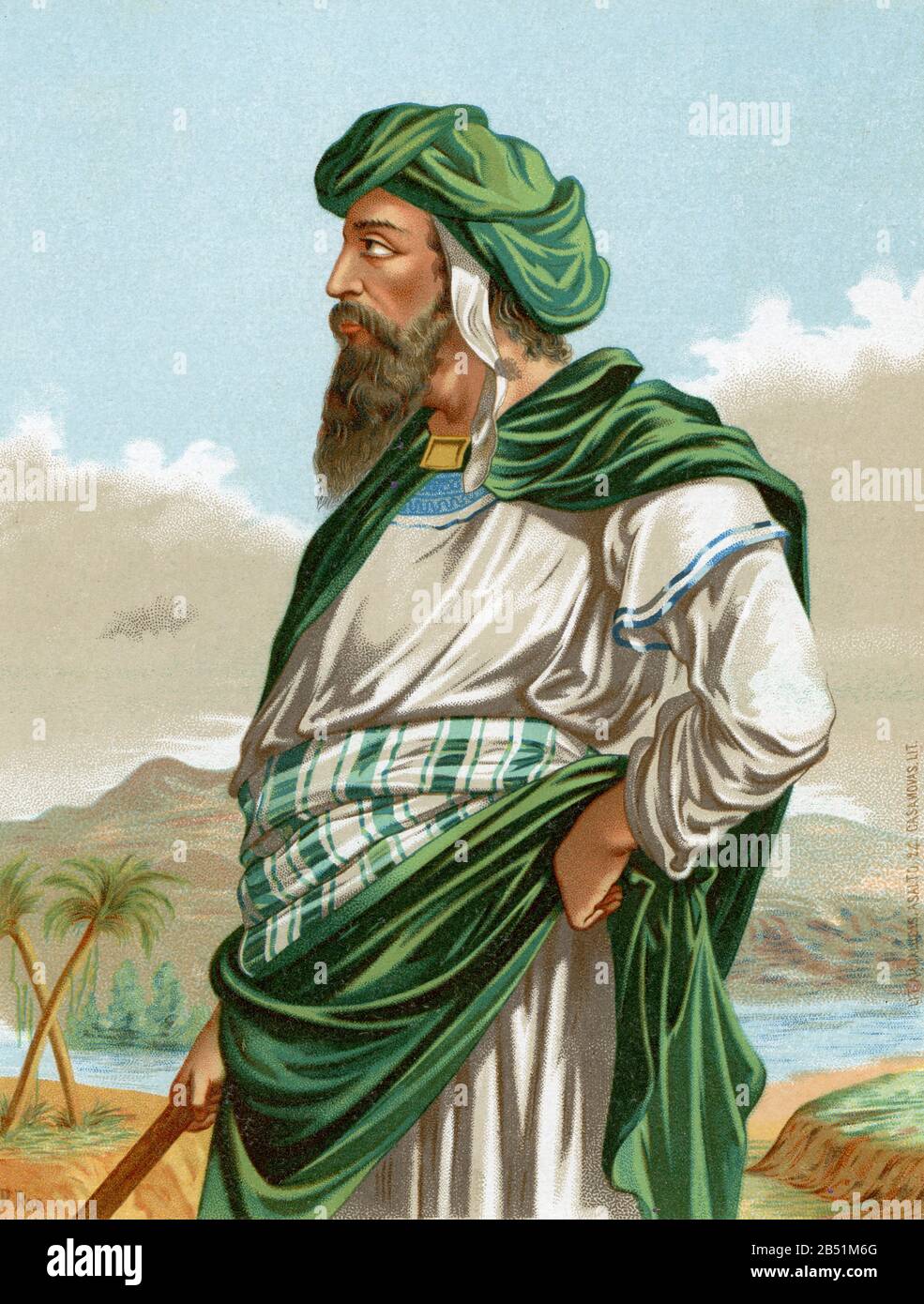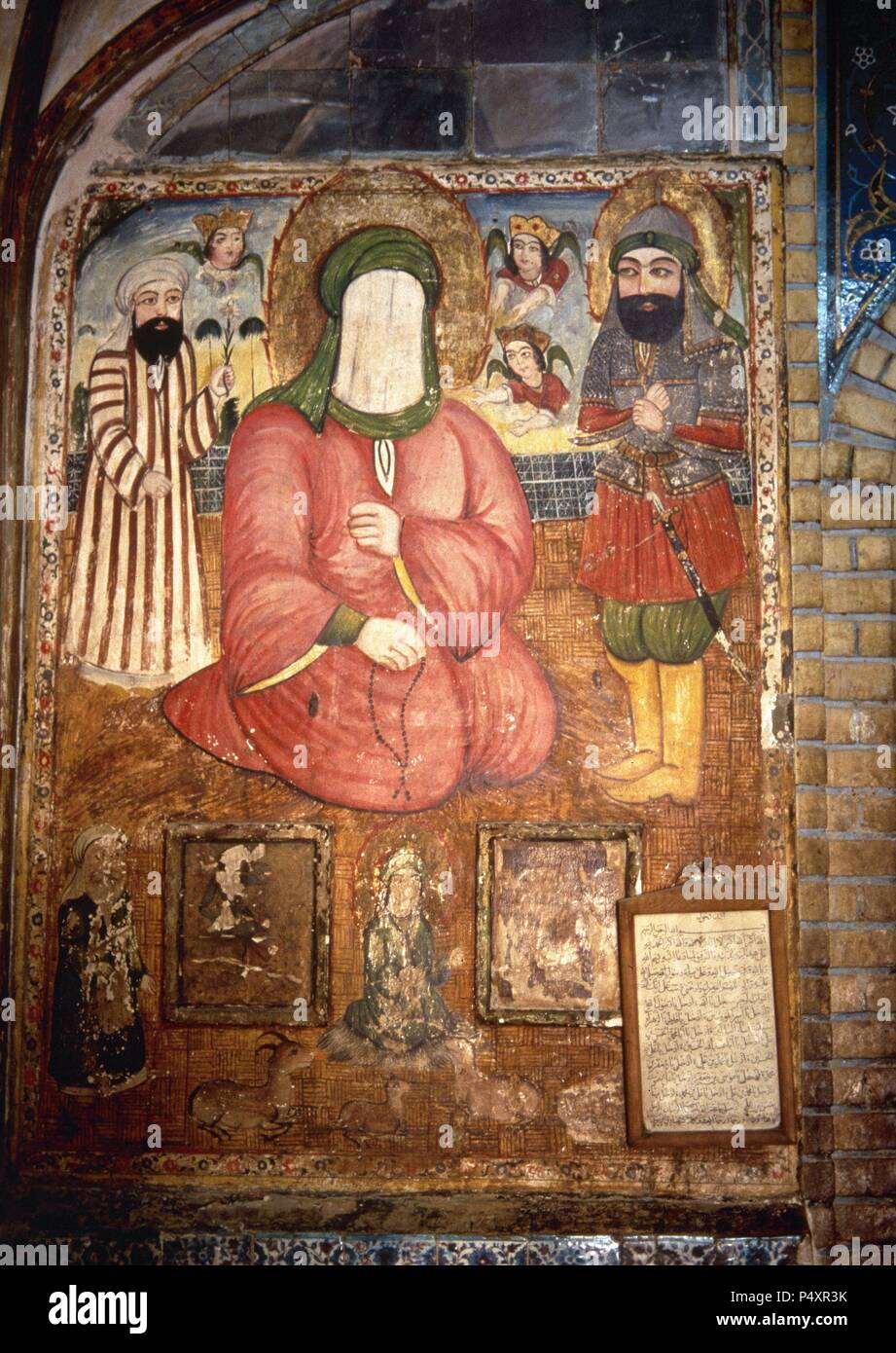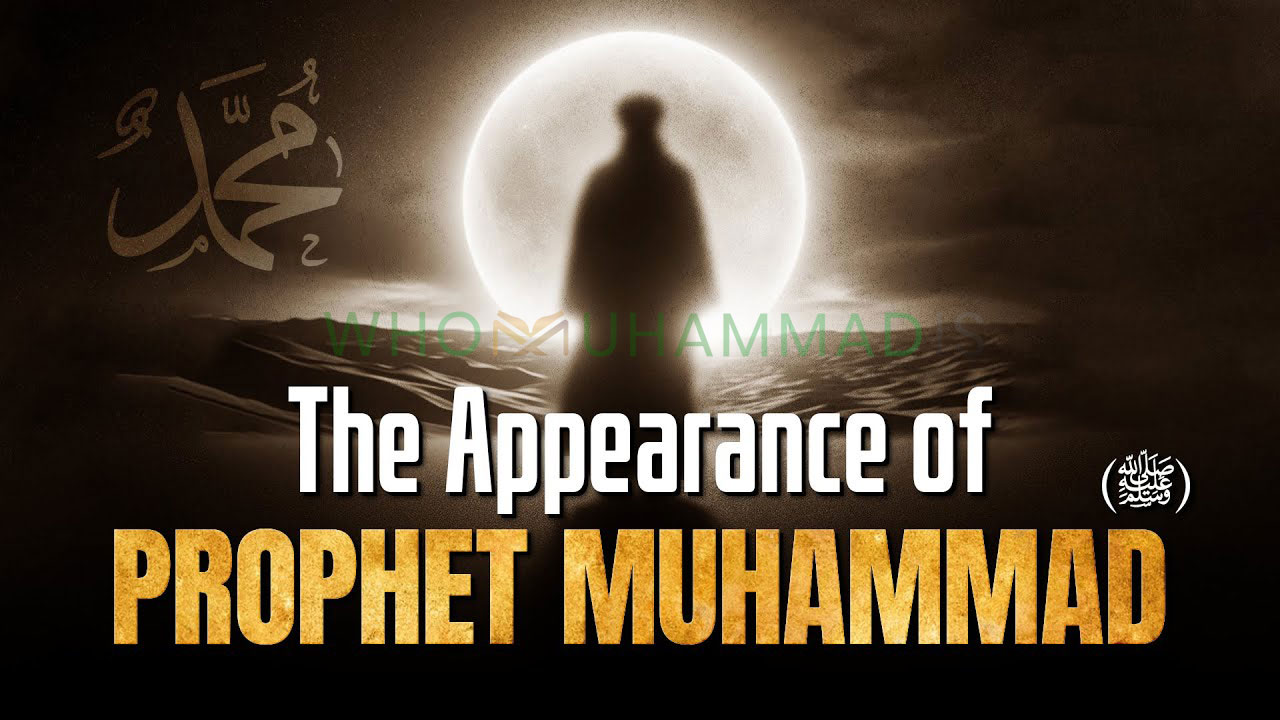It's a really natural question, isn't it? Many people, from all walks of life, often wonder about the physical appearance of historical figures, especially those who have shaped the course of human events. When it comes to the Prophet Muhammad, peace be upon him, this curiosity about "How does Muhammad's face look like?" is something that comes up quite a lot, and it's a very understandable thought to have, particularly if you're just starting to learn about Islam or its rich history. So, in a way, it's about connecting with a person who holds such immense significance for billions of people around the globe.
Yet, the way we approach this particular question, you know, about his face, is a bit different from how we might think about other historical personalities. This is because, within Islamic tradition, there's a really profound and long-standing practice concerning visual depictions of the Prophet. It's not just a casual preference; it's deeply rooted in the faith's principles and has been a guiding custom for centuries. So, it's almost, in some respects, more about what isn't seen, and the reasons behind that, than what is.
This article aims to gently guide you through this important topic. We'll explore why visual representations of the Prophet Muhammad are generally not found in traditional Islamic art or practice, and what the true emphasis of the faith actually is. We'll touch on historical accounts, the wisdom behind these traditions, and how people can respectfully learn about the Prophet's life and message today. It's a journey into understanding a core aspect of Islamic belief and cultural expression, and, you know, it's pretty fascinating.
Table of Contents
- Understanding the Prophet Muhammad: A Brief Overview
- The Islamic Stance on Depicting Prophets
- Historical Accounts and Descriptions
- The Wisdom Behind the Absence of Imagery
- Respectful Inquiry in a Modern World
- Frequently Asked Questions About Muhammad's Appearance
- Reflecting on Understanding
Understanding the Prophet Muhammad: A Brief Overview
To truly grasp why the question of "How does Muhammad's face look like?" is handled in a particular way, it helps to first get a little bit of background about who he was. Prophet Muhammad, peace be upon him, was born in Mecca, in what is now Saudi Arabia, around the year 570 CE. He was, in a way, a pivotal figure, considered by Muslims to be the last prophet sent by God to guide humanity. His life was, you know, a remarkable one, marked by profound spiritual experiences, significant societal changes, and the establishment of a new faith.
He received revelations from God, which were later compiled into the Qur'an, the holy book of Islam. His teachings and actions, recorded in what are called Hadith, serve as a model for Muslims to follow. He was not just a spiritual guide but also a community builder, a leader, and a family man. So, his impact, you know, extends far beyond just religious doctrine, touching upon all aspects of life for his followers. It's a rather comprehensive influence, you might say.
Personal Details: A Glimpse into the Prophet's Life
While the focus of this article is on his appearance, it's helpful to list some universally accepted facts about the Prophet Muhammad's life, which help ground our understanding of him as a historical and spiritual figure. As a matter of fact, these details give us a framework for his journey.
| Full Name | Muhammad ibn Abdullah ibn Abd al-Muttalib ibn Hashim |
| Birthplace | Mecca, Arabian Peninsula (modern-day Saudi Arabia) |
| Birth Year | Circa 570 CE |
| Death Year | 632 CE |
| Place of Death | Medina, Arabian Peninsula (modern-day Saudi Arabia) |
| Known Roles | Prophet, Messenger of God, Founder of Islam, Statesman, Military Leader |
| Visual Depiction | No authentic visual representations exist or are traditionally sanctioned. |
The Islamic Stance on Depicting Prophets
When people ask, "How does Muhammad's face look like?", they're often surprised to learn that there are no widely accepted or traditionally sanctioned visual images of him. This isn't, you know, an oversight or a lack of historical record; it's a very deliberate and deeply rooted aspect of Islamic belief and practice. The main reason for this tradition is to prevent anything that could lead to idolatry or the worship of an image rather than God alone. Muslims believe in the absolute oneness of God, and any visual representation, even of a revered prophet, could potentially become an object of veneration, diverting attention from the true object of worship.
So, the emphasis, you know, is placed squarely on the message, the teachings, and the character of the Prophet, rather than his physical form. The idea is that his appearance, while undoubtedly human, is secondary to his prophetic mission. By not having images, it encourages believers to focus on his exemplary life, his moral qualities, and the divine revelations he brought, which are considered to be universal and timeless. This helps keep the spiritual focus pure and unadulterated, you see.
This practice also extends, in a way, to other prophets in Islam, like Jesus or Moses, peace be upon them. While some cultures outside of traditional Islamic contexts might have visual depictions, within mainstream Islamic art and religious contexts, you typically won't find such images. It's a way of upholding the principle that God is beyond human comprehension and cannot be depicted, and that prophets are messengers, not deities themselves. This, you know, is a very central tenet of the faith, and it shapes a lot of cultural expression too.
Moreover, there's a concern that any human attempt to depict the Prophet would inevitably fall short and potentially misrepresent him. How could an artist truly capture the spiritual essence and profound significance of such a figure? It's a rather challenging task, to say the least. So, by refraining from visual representations, Muslims aim to preserve the sanctity and unique status of the Prophet, allowing his teachings to resonate without the distraction or limitation of an imagined face. It’s a pretty powerful concept, actually, when you think about it.
Historical Accounts and Descriptions
Even though there are no visual images, it's not like there's a complete void when it comes to descriptions of the Prophet Muhammad. In fact, quite the opposite is true. There are numerous textual accounts, preserved in the Hadith literature – which are collections of sayings, actions, and approvals attributed to the Prophet – that offer verbal descriptions of his physical characteristics. These accounts were, you know, meticulously transmitted by his companions and later scholars, aiming to paint a picture through words rather than drawings.
These descriptions often focus on his noble bearing, his kind eyes, his radiant face, and his dignified presence. For example, companions would describe him as having a moderately built physique, with a broad chest and shoulders. His hair was often described as being neither straight nor curly, falling to his shoulders. His beard was full, and he had a distinct, prophetic seal between his shoulder blades. So, you get a sense of his general appearance, a rather vivid one, through these written narratives.
People who saw him often spoke of his captivating smile and the light that seemed to emanate from his face. They would describe his walk as purposeful and his voice as clear and commanding, yet also gentle. These aren't, you know, forensic details, but rather impressions and observations that convey his overall demeanor and the profound impact he had on those around him. It's a way of knowing him through the eyes and words of those who lived with him, which is, in some ways, quite intimate.
However, it's crucial to understand that these verbal descriptions are meant to evoke respect and admiration for his character and prophetic stature, not to create a mental image for worship. They serve to humanize him, showing that he was a person who walked among them, yet also emphasize his unique spiritual qualities. So, when someone asks "How does Muhammad's face look like?", the traditional Islamic answer points to these rich, descriptive texts, inviting people to learn about his personality and teachings instead of focusing on a forbidden visual. It’s a pretty important distinction, you know.
The Wisdom Behind the Absence of Imagery
The tradition of not depicting the Prophet Muhammad visually is, you know, much more than just a rule; it's steeped in profound wisdom that serves several important purposes within Islam. One key reason is the prevention of idolatry, which we touched upon earlier. Islam is absolutely firm on the concept of Tawhid, the oneness of God, and that God alone is worthy of worship. Any image, even of a revered figure, could potentially become an object of veneration, and that's something the faith seeks to avoid at all costs. It's a very clear principle, actually.
Another significant aspect is the universality of the message. If the Prophet Muhammad were depicted in a specific way – with a particular face, skin tone, or ethnic features – it could, you know, inadvertently limit his appeal or make him seem tied to one specific culture or group. By not having a fixed image, his message can transcend cultural and ethnic boundaries, allowing people from all backgrounds to connect with his teachings without feeling that he belongs exclusively to one group. This makes the message, in a way, truly universal, which is quite powerful.
Furthermore, the absence of visual depictions encourages Muslims to focus on the spiritual and ethical dimensions of his life. The Prophet's teachings emphasize character, justice, compassion, and devotion to God. These are qualities that can't be captured in a drawing or a painting. So, rather than looking at an image, believers are encouraged to emulate his actions, internalize his wisdom, and live by the principles he exemplified. It's about, you know, a living example, not a static picture.
It also protects the Prophet's sanctity. Any human depiction, no matter how well-intentioned, is ultimately limited and imperfect. By avoiding such images, the reverence for the Prophet remains pure and untainted by human artistic interpretations that might not do justice to his profound status. This ensures that his image is preserved in the hearts and minds of believers through his teachings and example, rather than through a potentially misleading visual. It's a rather thoughtful approach, you might say, to preserving respect.
Respectful Inquiry in a Modern World
In our interconnected world, where information is, you know, pretty much everywhere, it's more important than ever to approach sensitive topics like "How does Muhammad's face look like?" with respect and a genuine desire to understand. For Muslims, the Prophet Muhammad is not just a historical figure; he is a beloved spiritual guide, and any discussion of him carries deep emotional and religious significance. So, when asking such questions, it's helpful to remember the cultural and religious context that shapes the answer.
If you're curious to learn more about the Prophet Muhammad, the best way, really, is to explore authentic Islamic sources. Reading translations of the Qur'an, studying collections of Hadith, and delving into biographies written by reputable scholars can provide a much richer and more accurate understanding of his life, character, and teachings than any visual representation ever could. You can find a lot of valuable insights by looking into scholarly works that discuss the historical and theological aspects of his life. For instance, learning about Islamic history on our site can give you a solid foundation.
It's also worth noting that while mainstream Islamic tradition avoids visual depictions, there have been some historical exceptions in certain cultural contexts, particularly in non-Arab Muslim lands, where stylized or veiled depictions might appear in illustrated manuscripts, usually in a way that avoids showing the face directly or obscures it. These are, you know, rare and not universally accepted, but they do exist as historical artifacts. However, they don't represent the dominant or normative Islamic view. You can often find discussions about these nuances in academic works on Islamic art, for example, a pretty good resource is available at The Metropolitan Museum of Art's Heilbrunn Timeline of Art History, which sometimes touches on the topic of depictions in Islamic art.
Ultimately, the true essence of understanding the Prophet Muhammad lies in appreciating his message of peace, justice, and submission to God. His physical appearance, as we've discussed, is not the focal point. Instead, it's his exemplary character and the guidance he brought that truly matter. So, you know, when you think about it, the question of his face becomes less about a visual image and more about a profound spiritual and ethical legacy. You can also explore more about religious traditions and their unique expressions.
Frequently Asked Questions About Muhammad's Appearance
People often have similar questions about the Prophet Muhammad's appearance, and it's good to address them directly. Here are a few common ones, and, you know, the answers often circle back to the core principles we've discussed:
Is there any picture of Prophet Muhammad?
No, there are no authentic pictures or visual depictions of the Prophet Muhammad. Islamic tradition generally discourages or prohibits the creation of such images to prevent idolatry and to ensure that the focus remains on his message and God alone. So, you won't find any photographs or historically verified portraits, basically.
What was the height of Prophet Muhammad?
Textual accounts from the Hadith describe the Prophet Muhammad as being of moderate height, neither very tall nor very short. Some descriptions suggest he was slightly above average, appearing taller than he was when seated, due to his noble bearing. So, it's more of a general sense of his stature, you know, rather than a precise measurement.
What was the color of Prophet Muhammad's hair?
Descriptions from his companions often state that the Prophet Muhammad had hair that was neither extremely curly nor perfectly straight, often reaching his shoulders. Its color was generally described as black, though some accounts mention a few white hairs appearing later in his life, particularly around his temples and beard, which is pretty typical with age.
Reflecting on Understanding
So, as we've explored, the question of "How does Muhammad's face look like?" leads us to a much deeper conversation about faith, tradition, and the profound ways in which different cultures approach the sacred. It's a reminder that understanding often comes not from a simple visual answer, but from appreciating the rich layers of meaning and history that shape a belief system. The absence of a visual image of the Prophet Muhammad, you know, isn't a void, but rather a space filled with spiritual significance and a powerful emphasis on the message over the messenger.
This approach, in a way, invites us to look beyond the superficial and to truly engage with the values and principles that the Prophet Muhammad exemplified. It encourages us to seek knowledge, to foster respect for diverse traditions, and to appreciate the wisdom behind customs that might, at first glance, seem unfamiliar. Ultimately, it's about building a more informed and respectful world, one where curiosity leads to genuine understanding. It's a pretty important goal, isn't it?
Related Resources:



Detail Author:
- Name : Prof. Ethyl McClure DDS
- Username : ila.will
- Email : pacocha.sophie@gmail.com
- Birthdate : 1994-02-16
- Address : 531 Kirstin Turnpike Mitchellfurt, AK 37985-8433
- Phone : +1-818-761-3798
- Company : Rutherford-Bogisich
- Job : Farmer
- Bio : Rerum porro blanditiis doloremque. Ad id est ut nihil non et ullam quas. Ullam inventore doloribus nam ut.
Socials
instagram:
- url : https://instagram.com/elisha.howe
- username : elisha.howe
- bio : Consequuntur non deserunt esse. Sunt adipisci omnis ea id officiis deserunt nihil.
- followers : 1082
- following : 2074
twitter:
- url : https://twitter.com/elishahowe
- username : elishahowe
- bio : Quia rerum reiciendis debitis eum. Repudiandae quia ab alias consequatur. Quis incidunt nisi quia quia placeat delectus. Aspernatur veritatis rerum doloremque.
- followers : 5124
- following : 2195
linkedin:
- url : https://linkedin.com/in/ehowe
- username : ehowe
- bio : Quod voluptate laudantium perferendis iure ad.
- followers : 6986
- following : 1096